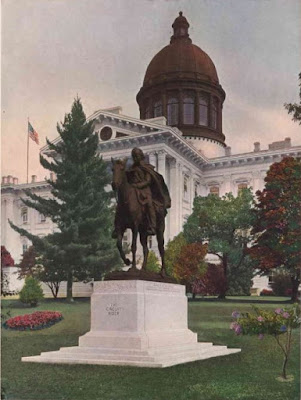AC Gilbert gets all the attention here because of the Erector Set's success and the physical locus of the house and museum at Riverfront Park. But an important ingredient in that is the fact that he's a man and made a toy for boys.
Another Salemite, Georgene Hopf, later Georgene Averill (and Hendren sometimes also), achieved national prominence for dolls, but she is not known at all outside of very niche conversation.
It might be true that the scale of the Erector Set's sales dwarf those of Hopf's dolls, and that the Erector Set originated a new category of toy, and so the cultural significance of Gilbert might yet be greater, but it's also certain in our histories that playing with dolls is slighted in favor of that proto-engineering play. Gilbert is scientist and inventor. The attention, like the toy, has been gendered. Hopf certainly deserves more notice.
 |
| January 30th, 1921 |
A century ago, in January of 1921 Hopf appeared a couple of times in the Society column of the morning paper here. The angle was the status conferred by the Fifth Avenue location of her shop in New York City and by recent magazine articles. It was the story of a local girl made good, "the most inventive and original designer in her line."



























